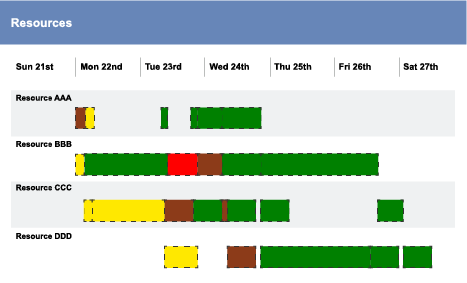Many factors need to be considered when it comes to streamlining your production process. One of the most important is having access to a reliable and efficient scheduling software solution. With the right production scheduling software, you can significantly reduce costs, improve customer service levels, and increase productivity.
But how do you choose the best system for your business? Here are five features you should look for in any production scheduling software.
#1. User-Friendly Interface
When selecting production scheduling software, looking for a user-friendly interface that provides easy access to all the features and functions necessary for successful production planning is essential.
A good user interface should allow users to quickly find and understand relevant information and easily interact with the scheduling system. It should offer an intuitive design, straightforward navigation, and consistent labeling throughout the platform so even new users can quickly get up to speed.
A user-friendly interface should include the following:
- Shortcut keys.
- Customizable dashboards.
- Drag-and-drop capabilities.
- Other features that make the user experience more efficient.
The software should be able to adapt to changing needs and conditions by allowing users to customize their configuration settings. This ability enables operations managers to adjust production schedules whenever needed without spending time reconfiguring the entire system.
#2. Ability to Determine Bottlenecks Before they Happen
When using production scheduling software, you can determine bottlenecks before they happen by accessing comprehensive data and reports.
Through these tools, you can:
- analyze detailed information about current processes
- monitor the progress of orders
- identify potential areas of inefficiency
- track past performance records
- use predictive analytics to forecast future trends to identify any potential delays
#3. Provides Real-Time Updates
Real-time tracking capabilities allow you to stay up-to-date on the status of your production schedule. If a bottleneck is detected, you can adjust early to keep the process running smoothly. This could involve adding additional resources or reorganizing the task sequence to ensure no deadlines are missed.
With automated reporting tools such as Gantt charts, you can easily visualize your project timeline and quickly spot any issues causing delays.
Flexible decision support options provide valuable insight into resource allocation decisions and allow operations managers to prioritize tasks based on their importance and urgency.
By assessing multiple scenarios, they can easily adjust production schedules accordingly and make informed decisions on where to allocate resources. This helps avoid any potential bottlenecks or disruptions in the production process.
#4. Dynamic Planning Versus Planning Software
The benefits of dynamic planning software versus static planning software include the following:
- Real-time updates allow operations managers to stay up-to-date on their production status.
- Predictive analytics can be used to forecast future trends and identify potential areas of inefficiency.
- Flexible decision support options provide valuable insight into resource allocation decisions and allow operations managers to prioritize tasks based on their importance and urgency.
- Comprehensive data and reports help avoid making ill-informed decisions that could lead to costly delays or unexpected expenses down the line.
- Automated reporting tools such as Gantt charts allow managers to visualize project timelines and spot any issues causing delays easily.
- Easily adjust production schedules to avoid any potential bottlenecks or disruptions in the production process.
By utilizing the latest dynamic planning software, businesses can significantly increase their operational efficiency while reducing costs and ensuring customer satisfaction.
This software provides the following:
- Real-time updates.
- Predictive analytics for forecasting future trends.
- Flexible decision support options.
- Comprehensive data and reports.
- Automated reporting tools such as Gantt charts.
All of these help operations managers make better decisions and meet customer demands.
The benefits of dynamic production scheduling software are numerous and can help operations managers increase efficiency and minimize costs in various ways.
Utilizing the latest dynamic planning software is essential for businesses looking to maximize efficiency while keeping up with customer demands.
#5. Easy to Integrate
Production Scheduling Software is relatively easy to integrate into existing operations management systems.
This type of software is designed to be flexible, allowing businesses to customize their production processes and reporting methods.
The user interface is intuitive and user-friendly, making it easy for operations managers to familiarize themselves quickly with the software and begin using it effectively. These programs are usually compatible with other existing systems, such as ERP or supply chain management platforms, allowing businesses to access data from multiple sources in one centralized location easily.
Production Scheduling Software can be deployed rapidly. Companies no longer worry about lengthy installation times or waiting for IT teams to develop custom solutions. This type of software can be up and running in a matter of days.
Many cloud-based solutions offer automated updates that ensure customers always use the latest software version without manually installing new features or bug fixes.
Learn More About Production Scheduling Software
Please get in touch with us to schedule a consultation if you want to know how Production Scheduling Software can maximize your business’s efficiency and minimize costs while meeting customer demands.
